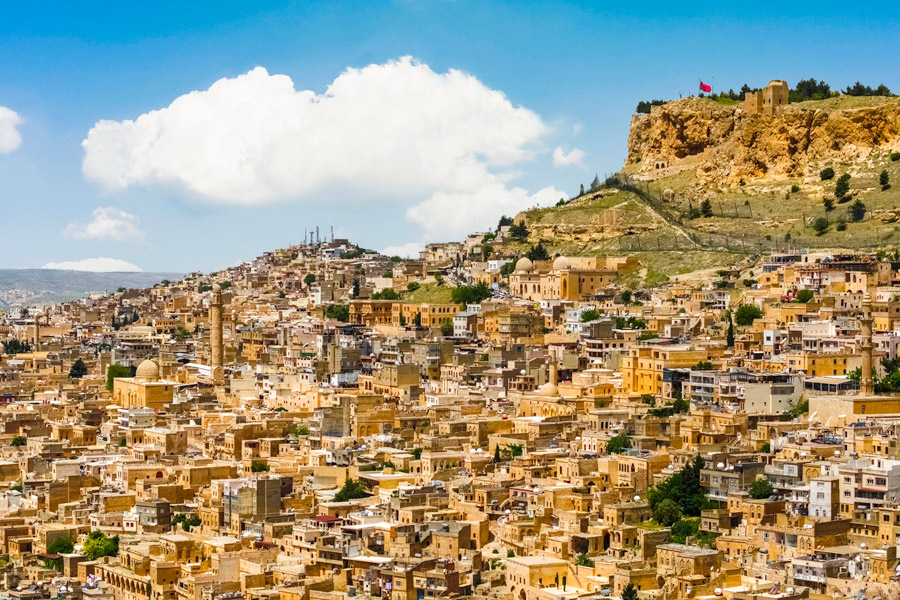
Mardin’s position on a rocky ridge above the Mesopotamian Plain in Turkey (Türkiye), made it a key stopover on the Silk Road. Caravans moving between Persia, Aleppo, and Anatolia passed through its gates, bringing silk, spices, and beliefs that shaped the city’s character. Mardin gained special importance on the Aleppo route, and the remains of caravanserais, hans, and covered bazaars confirm the commercial importance the city once held. Today the stone alleys and stairways are the backdrop for many Mardin tourist attractions.
For visitors considering what to do in Mardin, this city on Southeastern Turkey has museums housed in restored Ottoman and 19th-century buildings, Bazaars stretching downhill from Cumhuriyet Caddesi, versatile religious heritage sites keeping to function as one of the oldest operating monasteries in the world and exploring them remain among the best things to do in Mardin for understanding its diversity.
Unforgettable Things to Do in Mardin

The city famed for its dense historical record and architecture is largely built in golden limestone, much of it dating from the Artuqid Dynasty between the 12th and 15th centuries. These landmarks form a core part of Mardin cultural tours. Exploring the alleys, where mosques, madrassas, churches, and monasteries lie within walking distance to each other, is central to most Mardin city tours and gives a direct sense of the multicultural traditions that define the area.
Mardin extends beyond the city itself to highlights such as ancient Ruins of Dara and Midyat's Assyrian architecture and silver workshops. Wine production by Assyrian families is preserved in both towns, adding food and drink to the list of things to do in Mardin. Trips into the countryside complement time spent in the stone alleys of the Old Town, making them part of many practical Mardin travel tips.
- Historical Post Office of Mardin
- Traditional Mardin Houses
- Culinary Experiences in Mardin
- Coppersmith Bazaar (Kazancılar Çarşısı)
- Hammams & Turkish Baths in Mardin
- Midyat Old City Day Trip
- Mor Gabriel Monastery (Deyrulumur Monastery)
- Assyrian Wine in Mardin
- Learn about Şahmaran
- Mardin 1 Day Itinerary
- 2-Day Itinerary Mardin
- Mardin 3-Day Itinerary
Old Town Mardin
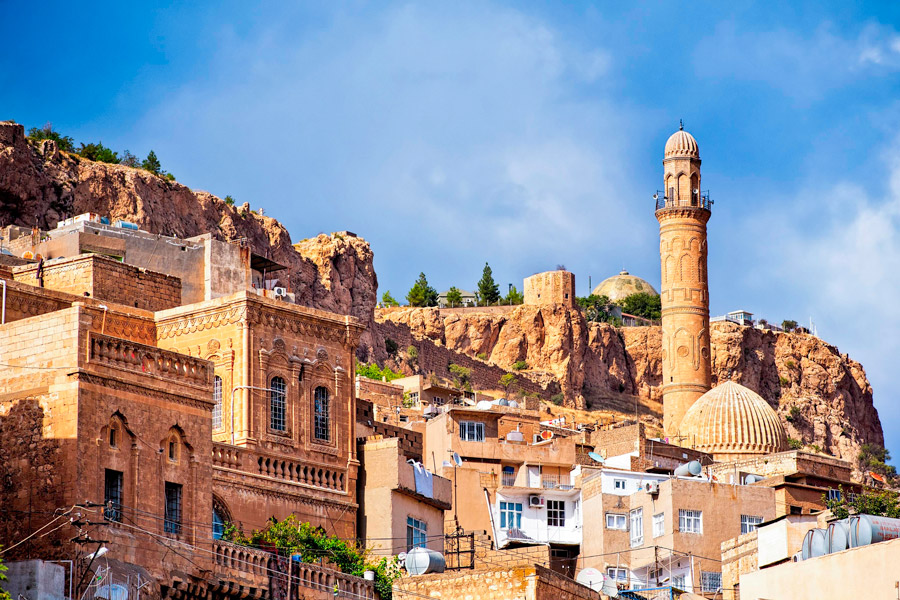
Recognised as the “Mardin Cultural Landscape” in UNESCO World Heritage Tentative list, the Old Town, made up of limestone houses, cobblestone streets, stairways, and covered passageways, is perched on a ridge with a view of the Mesopotamian Plain. With Seljuk architectural influences, the majority of buildings are from the Artuqid Dynasty, which lasted from the 12th to the 15th century. The primary activity is strolling through the winding lanes, where guests come across old houses, arched gates, and stone-carved facades. The town is crowned by the ruins of Mardin Castle, and the design resembles an outdoor museum. A key component of Mardin cultural tours and city walks is exploring the old quarter.
Mardin Grand Mosque (Ulu Camii)
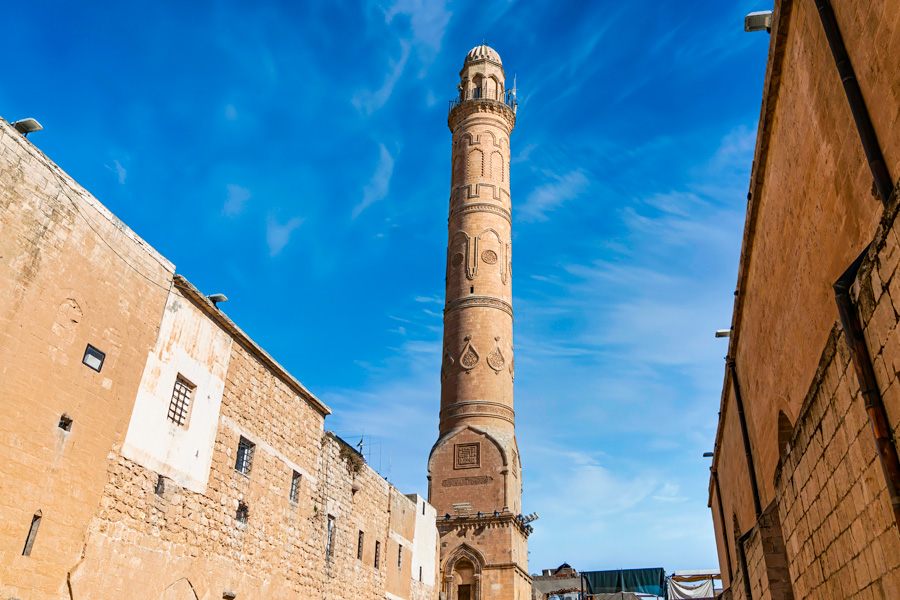
According to inscriptions, the Mardin Grand Mosque (Ulu Camii) was erected in the Artuqid era in 1176. Rebuilt in 1888–1889 on a square base, it had two minarets at first, but now only one is left. The mosque is built of cut stones shaped with an external fluting technique, which later became a tradition in Mardin architecture. The domed mihrab hall, the rectangular northern courtyard, and sixteen inscriptions detailing repairs made during various dynasties are all visible to visitors. It continues to be a major destination for religious history and Mardin city tours.
Mor Hananyo Monastery (Saffron Monastery)
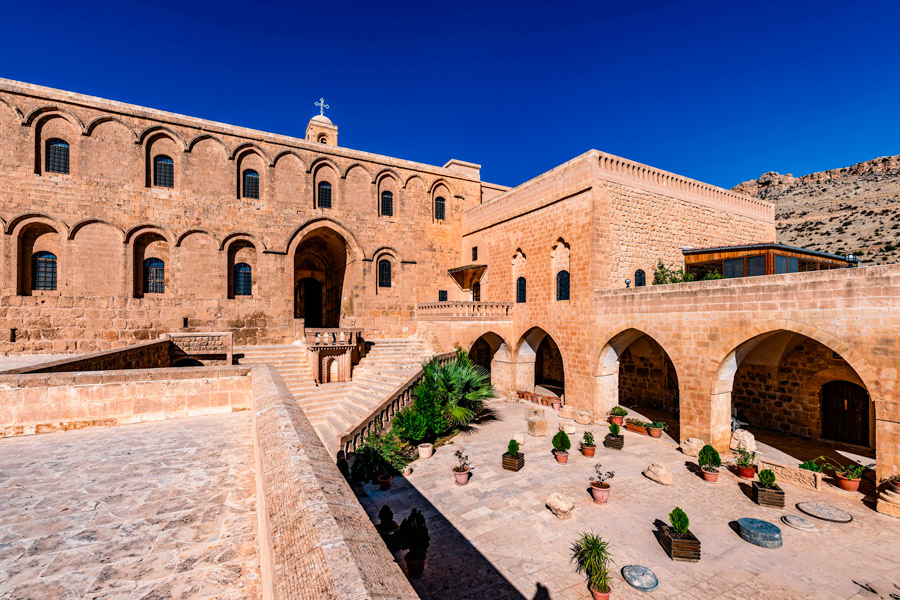
Established in the 5th century, Mor Hananyo Monastery is 5 kilometres east of the city and was the seat of the Syrian Orthodox Patriarchate from 1293 until 1932. The monastery includes the remains of a pagan temple and a Roman fortification, as well as ancient churches and the tombs of fifty-two patriarchs. The highlights of Mor Hananyo include the main church, the patriarchal throne, carved panels, and wooden doors with Syriac writing. The monastery library produced important manuscripts, such as lectionaries with elaborate decorations and translations of Greek works. Visiting the monastery is among the essential Mardin sightseeing activities for understanding its religious history.
Sultan Isa Madrasa (Zinciriye Medresesi)

The two-story Zinciriye Madrasa, which was founded in 1385 by Melik Necmettin Isa, the last Artuqid Sultan, accommodates a courtyard, a mosque, a tomb, and student quarters. From a distance, its imposing eastern portal and domes are architectural landmarks. Isa Bey himself was once imprisoned here for opposing Timur, which adds historical significance to the madrasa. It was once home to the Mardin Museum and is now open to the public every day from 8:30 to 17:00 for a 30 TL admission fee. Because of its unique blend of history and architecture, this location is frequently featured on Mardin city tours.
Kasımiye Madrasa
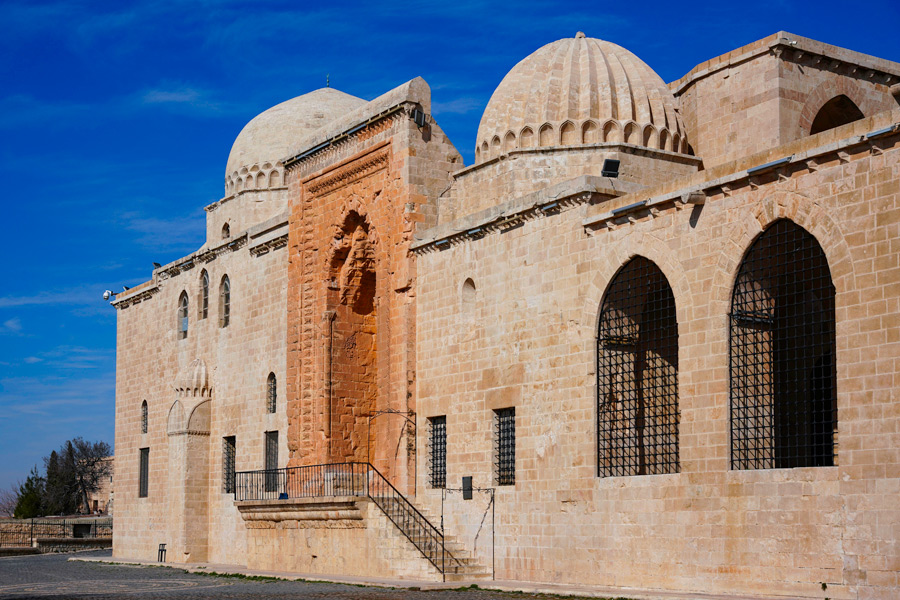
Under Aq Qoyunlu rule, Kasımiye Madrasa was finished in the 15th century, having started in the 13th. There astronomy, philosophy, and mathematics were taught, serving as a religious and scientific institution. The two-story building embraces a monumental southern portal that faces the Mesopotamian Plain and a courtyard with a symbolic pool representing the cycle of life. Its cultural depth is enhanced by legends pertaining to Sultan Kasim Pasha. Today, it functions as a museum and is a major destination on Mardin cultural tours. It costs 30 TL to enter and is open until 19:00 in the summer.
Mardin Museum
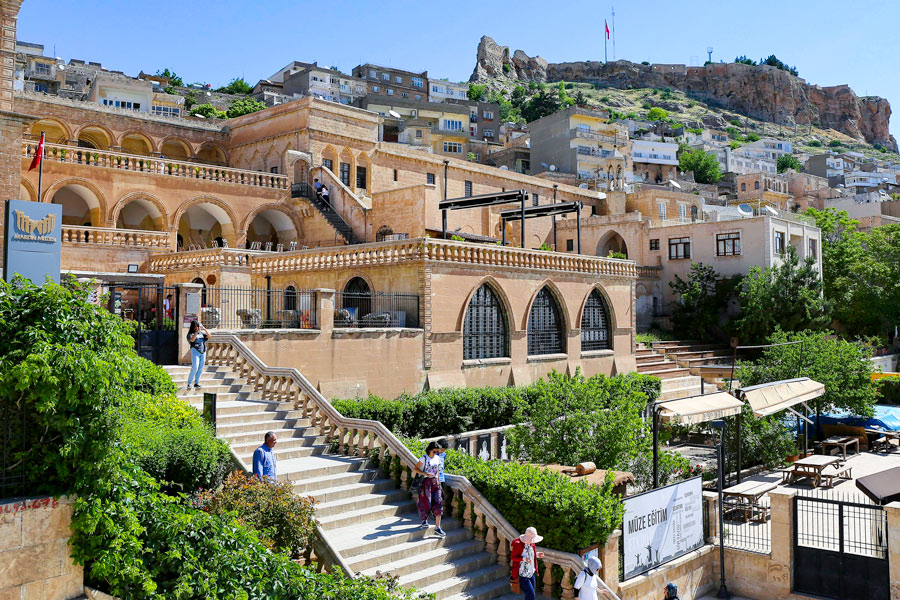
Reopened in 2000, the Mardin Museum is housed in the former Assyrian Catholic Patriarchate, which dates back to 1895. The museum is accessible with Museum Pass Turkey, in which Mesopotamian, Byzantine, Artuqid, and Ottoman artefacts are on display, including mosaics, ceramics, stone reliefs, and coins. The ground floor features outdoor exhibits, a kid-friendly arkeopark, and classrooms hosting workshops in natural dyeing, ceramics, and paper marbling. In addition to covering artefact forgery and smuggling, the first and second floors feature thematic halls on belief, trade, daily life, and defence. This museum provides crucial background information on the region's complex history for Mardin cultural tours.
Sakıp Sabancı Mardin City Museum
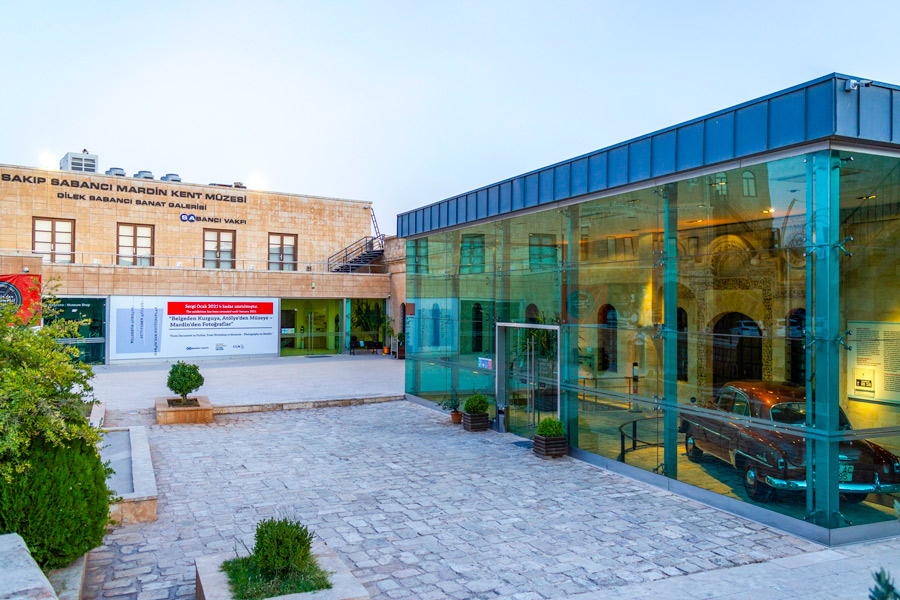
Set in an 1889 cavalry barracks, the Sakıp Sabancı Mardin City Museum documents local history, handicrafts, and social life. Tombstones of different faith communities, traditional jewelry, weaving, soap making, and stone carving are displayed in the exhibitions. The upper floors show household and worship objects, while the Dilek Sabancı Art Gallery hosts rotating exhibitions ranging from photography to international contemporary art. The museum is included in most of the things to do in Mardin, combining architectural history with changing cultural displays.
Historic Bazaars of Mardin
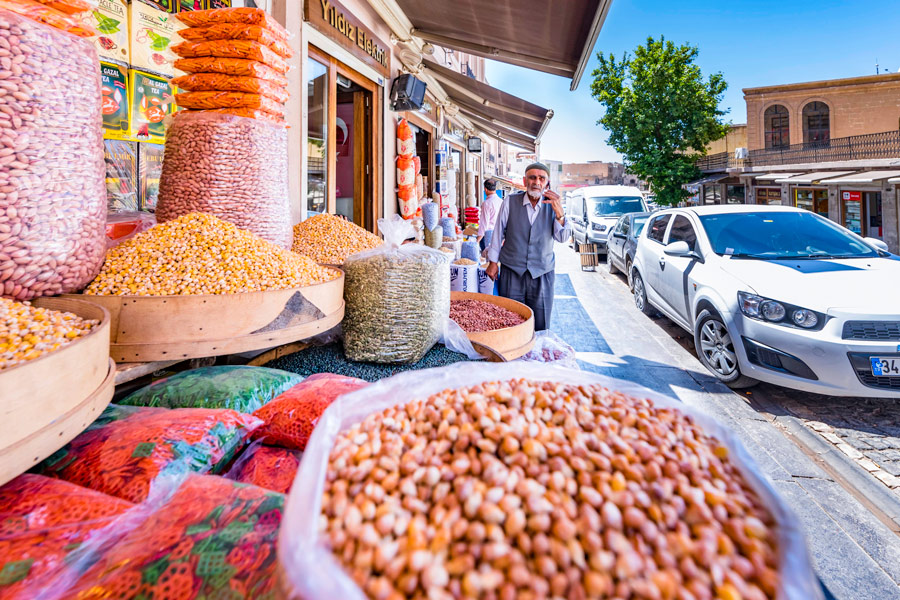
From Cumhuriyet Caddesi, Mardin Bazaars extend downhill into cobblestone alleys that are inaccessible to cars and still rely on donkeys for transportation. Fruits and vegetables were sold at the 15th-century Arasa Bazaar. It now focusses on local products and spices. In addition to stalls full of food and household goods, visitors can observe the workshops of metalworkers, carpenters, and textile vendors. The best way to experience Mardin's everyday life, handicrafts, and local interaction is to explore these markets.
Mardin Castle
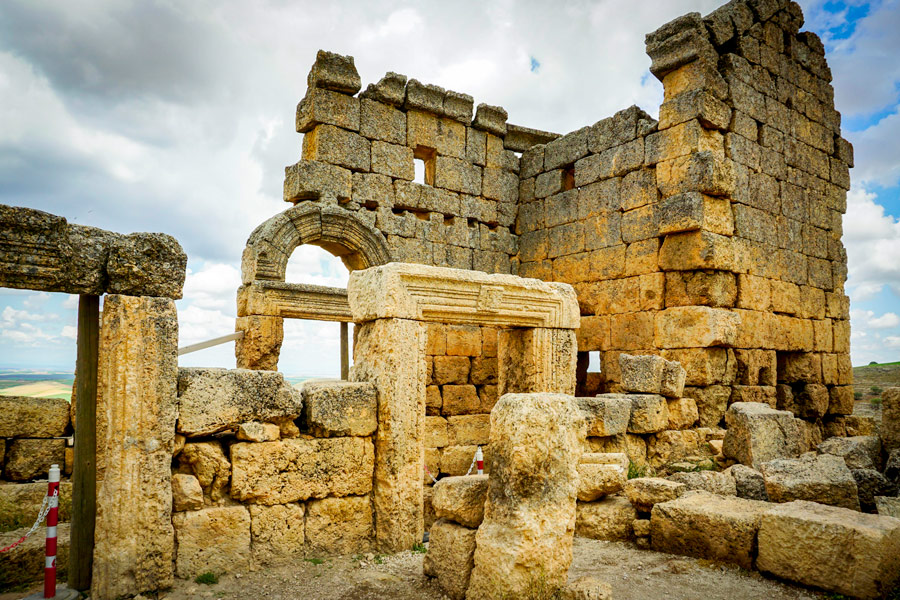
Over 1,000 metres above the Mesopotamian Plain, Mardin Castle, also referred to as the Eagle's Nest, is more than 3,000 years old. The Ottomans partially restored it after it had been fortified during the Hamdanid and Artuqid dynasties, and it has remained a military base into the present day. Hike near the summit for expansive views of Mardin and the surrounding area, but full access is restricted due to military presence. Even with limited access, this location is regularly included as a historic landmark in Mardin travel guides.
Ancient City of Dara
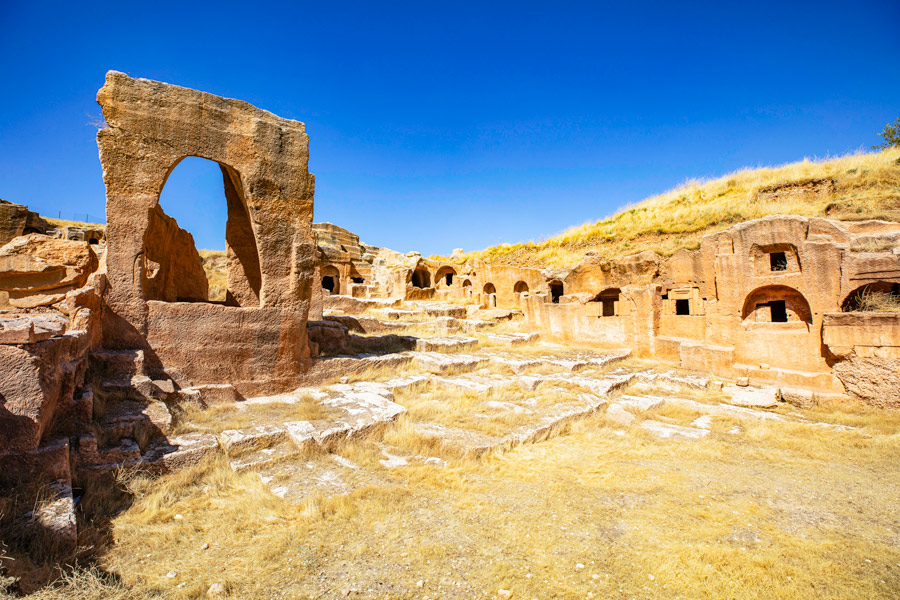
30 kilometres southeast of Mardin, Ancient City of Dara was a major Late Roman and Byzantine military base. Ruins cover necropolises with rock-cut tombs, mausoleums, and the Large Gallery Grave carved in 591. Visitors can explore four kilometres of fortification walls with 28 towers, four gates including water gates running along the Cordis River, and the stone-paved Agora Street linked to the Silk Road. The castellum aqua, the reservoirs beneath the Great Church, and the large cisterns all demonstrate Dara's defensive planning. Mosaic structures, a baptism basin, and a marketplace are among the other remnants. Walking among the ruins of Dara, one of the most significant historical sites in Mardin today, is thought to be one of the most thorough ways to learn about the ancient settlement systems in Mardin.
Mor Behnam (Kirklar Church)
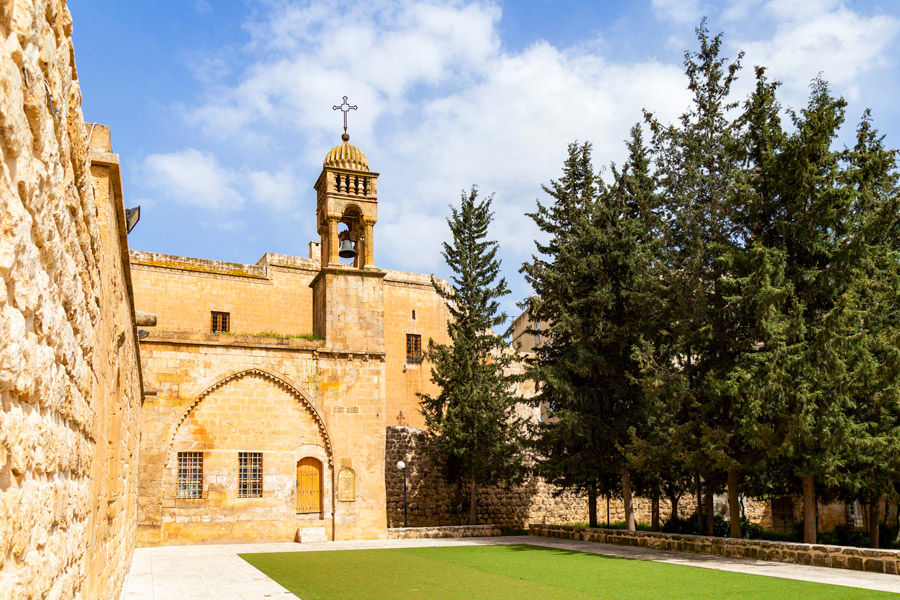
Mor Behnam Church, also known as Kirklar Church or the Church of the 40 Martyrs, is a Syriac Orthodox cathedral located in the heart of Mardin that was constructed in 569. The church has elaborate stonework, wooden gates, twelve supporting pillars, and a sizable courtyard. Relics from 40 martyrs were brought here in 1170, and their story is depicted in the painting inside. This is still a site of worship and is open during services and visiting hours, making it a must for things to do in Mardin.
Hatuniye Madrasah

Set by Sitti Raziyye of the Artuqid dynasty in the 12th century, Hatuniye Madrasah served as a centre for education and religion. Its architectural designs incorporate exquisite stonework, an Iwan made of stone, and a tomb that houses Sitti Raziyye's grave. Even today, a part of the building is used as a mosque. Due to the building's meticulous restoration, visitors can now explore one of many important historical sites in Mardin showcasing the Artuqid architectural legacy.
Historical Post Office of Mardin

Designed by Armenian architect Sorkis Lole in 1890, the Mardin Post Office originally served as the Shahtana family mansion before becoming a post office in the 1950s. Known for its elaborate stonework and grand staircase, the building also functions as a cultural facility managed by Mardin Artuklu University. Visitors can access the terraces for panoramic views of Mesopotamia, Şehidiye Mosque, and Mardin Castle. It remains among the best places to visit in Mardin for architecture and history.
Traditional Mardin Houses
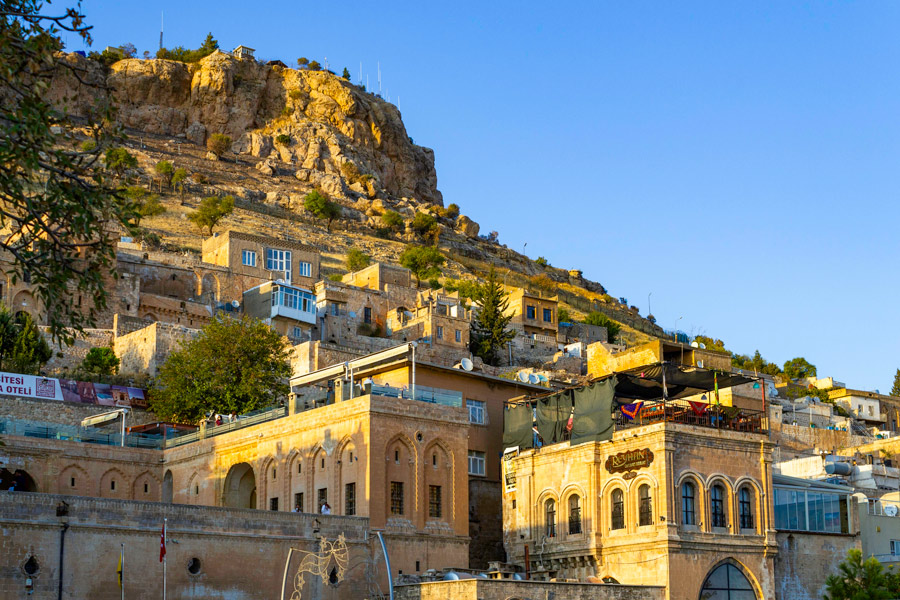
Each of Mardin's stone houses has an expansive view because of their stepped layout. With distinct haremlik and selamlık sections that reflect social customs, many are from the Ottoman era. The Firdevs Pavilion and Midyat Guest House are two outstanding examples that are preserved in districts like Midyat, Savur, and Nusaybin. A major component of Mardin sightseeing is strolling through the historic districts, which will help you discover the city's centuries-old architectural continuity.
Culinary Experiences in Mardin

The cuisine of Mardin consists of unique dishes and regional goods associated with its customs. Handleless cups are used to serve Mırra, a strong coffee that is brewed several times. The labour-intensive stuffed ribs made with rice, almonds, and meat, the sugar-coated almond candies dyed with natural dyes, and the fried and boiled stuffed meatballs (Irok and Ikbebet) are examples of local cuisine. Another popular dish is roasted chickpeas seasoned with chilli, cloves, or cinnamon. Authentic Mardin local experiences can be obtained by sampling these foods.
Coppersmith Bazaar (Kazancılar Çarşısı)
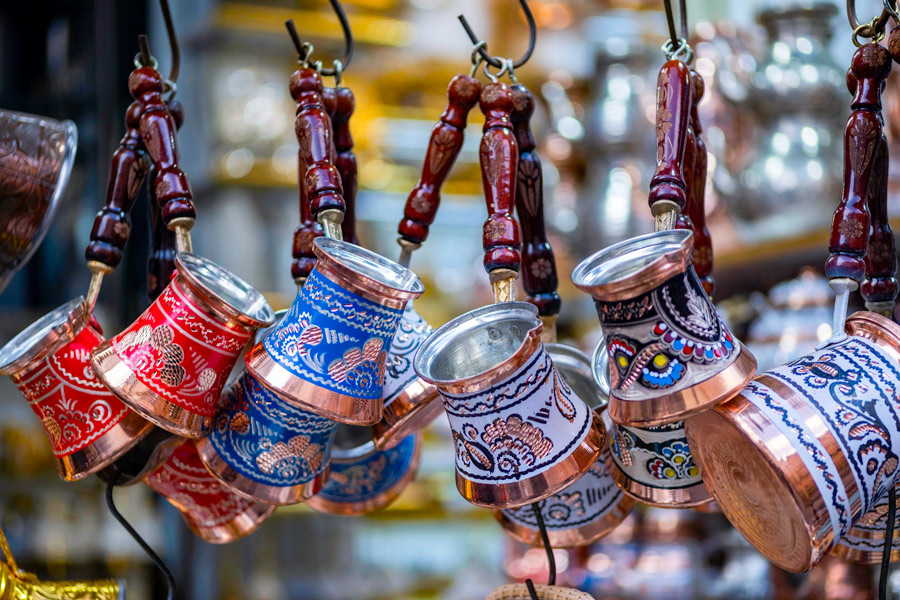
The heart of Mardin's domestic goods manufacturing, the Coppersmith Bazaar (Kazancılar Çarşısı) produced everything from cauldrons to plates. Copper is still hammered into trays, teapots, and ornamental items in workshops that still function beneath its arches. Visitors are able to observe traditional craftsmanship in action and hear the sound of hammers. One of the best things to do in Mardin for anyone interested in local crafts and cultural preservation is to explore this bazaar.
Hammams & Turkish Baths in Mardin
The Sıhhi Emir Hamam, first constructed in the 12th century and rebuilt in 1938, is the oldest surviving bath in Mardin. Its design features a domed dressing area and octagonal private rooms around the hot chamber. The Savurkapı Hammam, dating to the same era as Hatuniye Madrasah, is another preserved bathhouse. In addition, modern massage centres and spas operate in the city, giving visitors multiple options for relaxation during their Mardin city tours.
Midyat Old City Day Trip
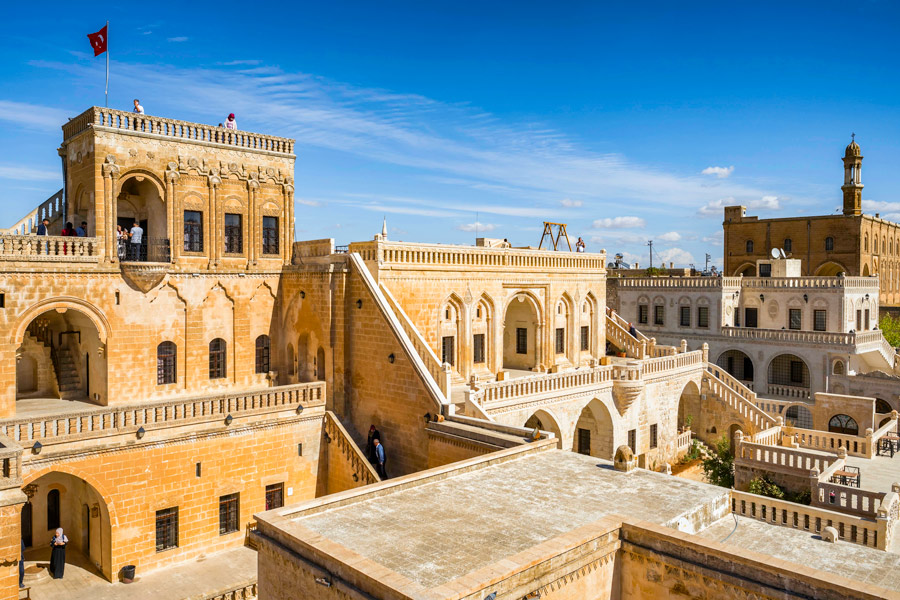
The ancient City of Midyat, which is roughly an hour's drive from Mardin, has a number of functioning churches and monasteries that preserve the Assyrian Christian heritage. The region is renowned for its traditional stone houses, some of which have undergone restoration. One such home is the Culture House, which is frequently featured in Turkish television shows. Families sleep on rooftops equipped with "taht" frames during the summer. One of the greatest things to do in the area around Mardin is to explore Midyat, which offers more historical sites and cultural insights.
Mor Gabriel Monastery (Deyrulumur Monastery)
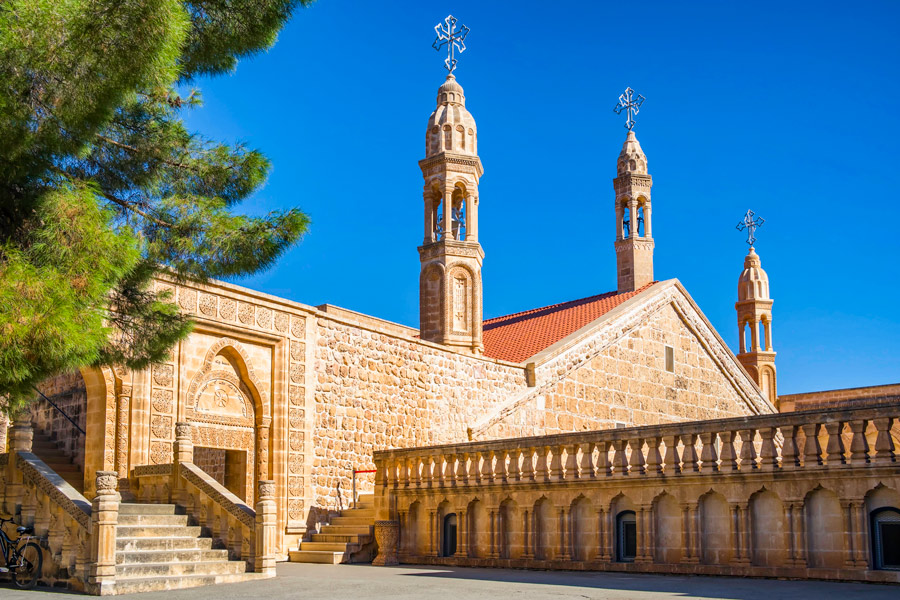
In 397, Mor Shmuel and Mor Shemun established Mor Gabriel Monastery, 23 kilometres southeast of Midyat. With the help of Roman emperors and more than a thousand monks by the 6th century, it developed into a significant Syriac Orthodox centre. The Dome of Theodora, the Church of the Apostles, and the Church of the Virgin Mary are its extensions. Additionally, sarcophagi, shrines, and the remains of monks killed in mediaeval invasions are preserved at the site. Older than monasteries on Mount Athos or Sinai, it is among the most significant Mardin historical sites to include in cultural tours.
Assyrian Wine in Mardin
For centuries, Assyrian Wine has been made from native grape varieties that have been kept alive by local families. Hand-crushed grapes and sun-fermented wine in outdoor vats are examples of traditional methods that are later combined with contemporary winemaking techniques for consistency. Despite obstacles from rising production costs, climate change, and high taxes, small producers in Mardin's historic city continue to preserve this legacy. Wine tasting is a highlight for tourists exploring the city and is part of the authentic Mardin local experience, as shops along the main street sell bottles alongside silverware and soaps.
Learn about Şahmaran
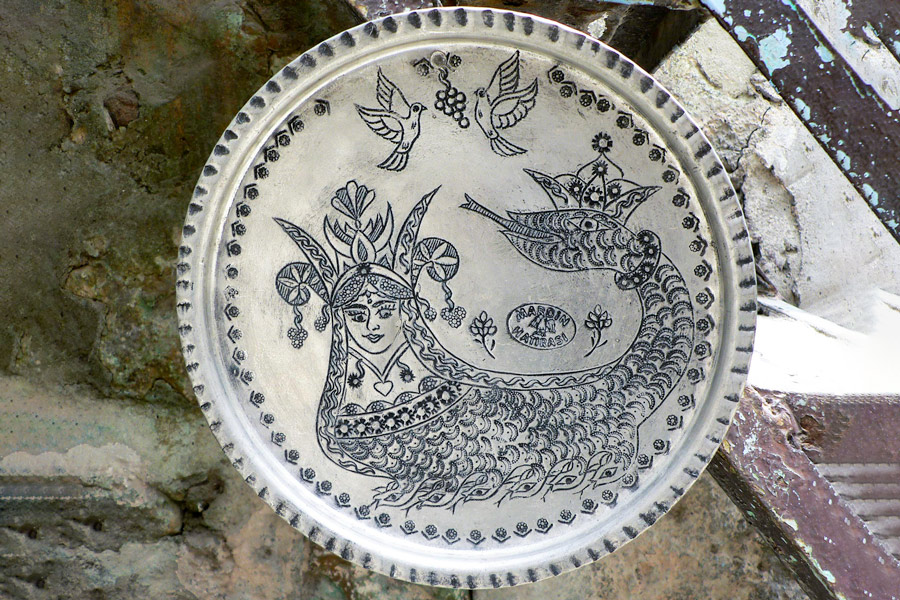
The legendary half-snake, half-woman figure known as Şahmaran is ingrained in Mardin's folklore and craftsmanship. Copper engravings, textiles, and local storytelling all reference her legend, which is associated with treachery, wisdom, and sacrifice. Cultural artefacts and exhibits related to the story are on display at the Mardin Museum, which gives background information on how the myth influenced local customs. Discovering Şahmaran is among the top things to do in Mardin, and seeing her motifs is a common part of Mardin sightseeing.
Top Things to Do in Mardin in 1 Day
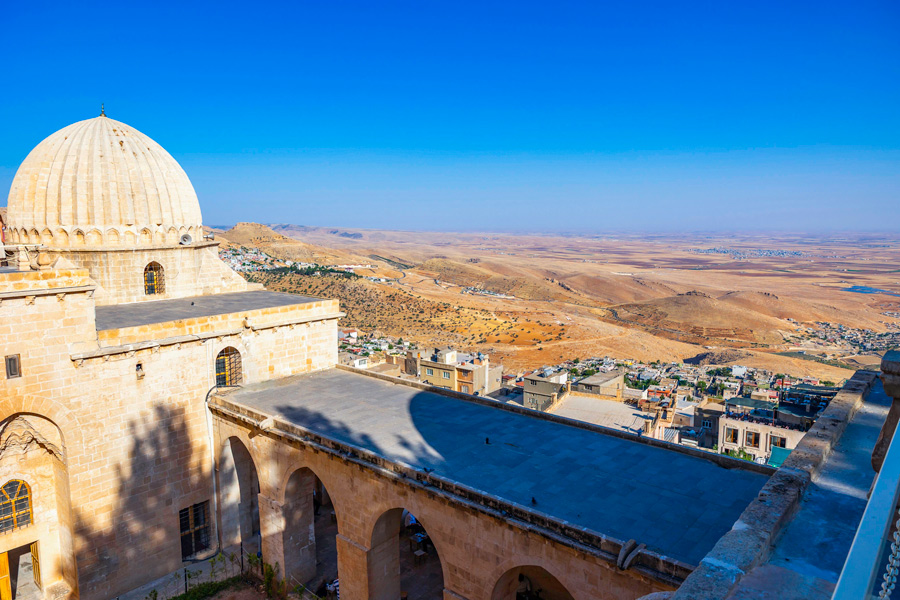
A day in Mardin can be shaped around its compact Old Town, where many of the top attractions in Mardin sit within walking distance of each other. Begin at Mardin Castle, the hilltop fortress with panoramic views of the Mesopotamian plains. From here, descend toward Zinciriye Medrese, a 14th-century Islamic school noted for its intricate stonework and peaceful courtyards. Just a short walk away, the Kasımiye Madrasah presents another striking example of Artuklu architecture, with expansive views over the city.
Within the same area, the Mardin Museum provides insight into civilisations that defined the region, displaying artefacts from Assyrians, Romans, Byzantines, and Ottomans. Nearby lies the Forty Martyrs Church, an early Christian site with finely carved stonework, and further outside the town, the Deyr-ul Zaferan Monastery highlights the Syrian Orthodox heritage of the region. These Mardin historical sites can easily be combined into a short Mardin city tour on foot or by car within minutes.
For meals, Old Town celebrates excellent stops: Cercis Murat Konağı for a traditional Mardin breakfast, Kasr-ı Nehroz or Bağdadi Restaurant for local lunch dishes like kaburga dolması (stuffed ribs), and Seyr-i Merdin for dinner with broad terrace views. Cafés such as Marangozlar Kahvesi are ideal for a Dibek coffee while enjoying the artisan market setting.
Late afternoon and evening are best for strolling through Old Mardin’s bazaars, where shopping becomes part of the experience. Visitors will find hand-carved copper items, silver filigree jewelry, Assyrian wines, aromatic soaps, and traditional sweets. This part of the city also allows time to observe local life, an essential element of Mardin cultural tours.
How to Spend 2 Days in Mardin?
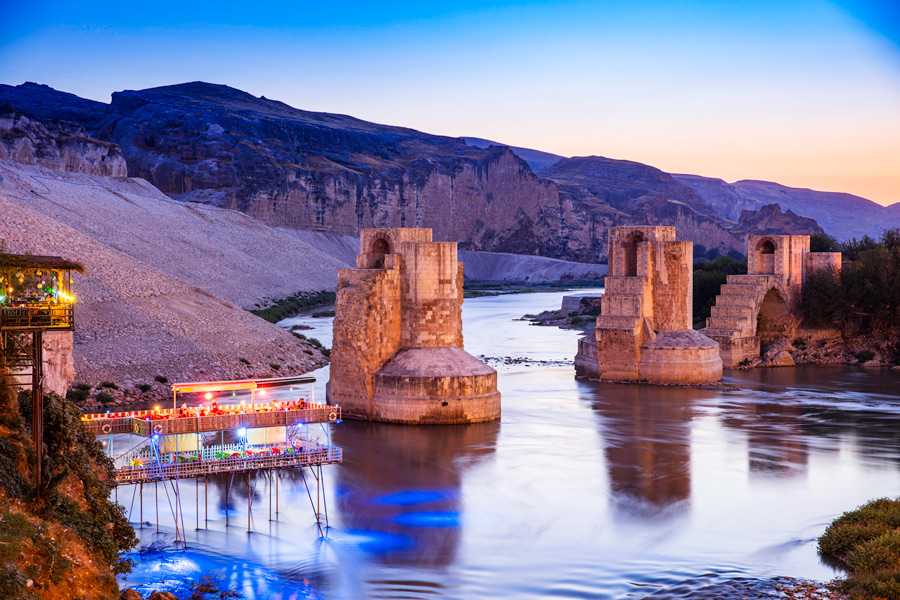
Exploring Mardin in two days allows visitors to see its most important landmarks while enjoying its food culture and everyday rhythm. Begin the first morning at Mardin Castle, where the views stretch across the Mesopotamian plains. From there, walk down to the Grand Mosque of Mardin (Ulu Camii), an essential stop for anyone interested in Islamic architecture. Continue to the Zinciriye Medrese, a 14th-century school with finely carved stone façades and a tranquil courtyard. After a morning of sightseeing, pause for breakfast at a traditional konak restaurant in the old town, where cheese varieties, fresh bread, and honey are served with tea or Dibek coffee.
Late morning is best spent strolling through the narrow alleys of Old Mardin, lined with stone houses and historic abbaras. The Mardin Museum nearby provides context for the civilisations that shaped this city, with exhibits on Assyrian, Roman, and Ottoman periods. Lunch can be enjoyed at a family-run restaurant full of regional dishes such as stuffed grape leaves and kaburga dolması. The afternoon should lead up to Kasimiye Madrasa, a large complex set on a hillside, perfect for watching the sunset. Dinner at a terrace restaurant overlooking the illuminated skyline closes the day with views and traditional mezes.
On the 2nd morning, plan a short drive outside the city to visit Deyrulzafaran Monastery, a Syriac Orthodox centre with a history dating back to the 5th century. Its chapels and courtyards illustrate the Christian heritage of the region. Return toward Mardin for breakfast in a local café before continuing to Midyat, a nearby town famous for its Assyrian churches and silversmith workshops. Here visitors can watch artisans create filigree jewelry, a highlight for anyone interested in Mardin local experiences. Lunch in Midyat should definitely include Assyrian wines and regional breads.
In the afternoon, the journey can extend to Mor Gabriel Monastery, regarded as one of the oldest operating monasteries in the world, or alternatively to Hasankeyf on the Tigris River, where caves and archaeological remains testify to millennia of settlement. Returning to Mardin in the evening, spend time in the bazaars where soaps, copperware, and sweets are displayed. With the final dinner at a restaurant in the old town travellers will enjoy a relaxed close to two days filled with Mardin tourist attractions, cultural tours, and activities.
Best Things to Do in Mardin in 3 Days
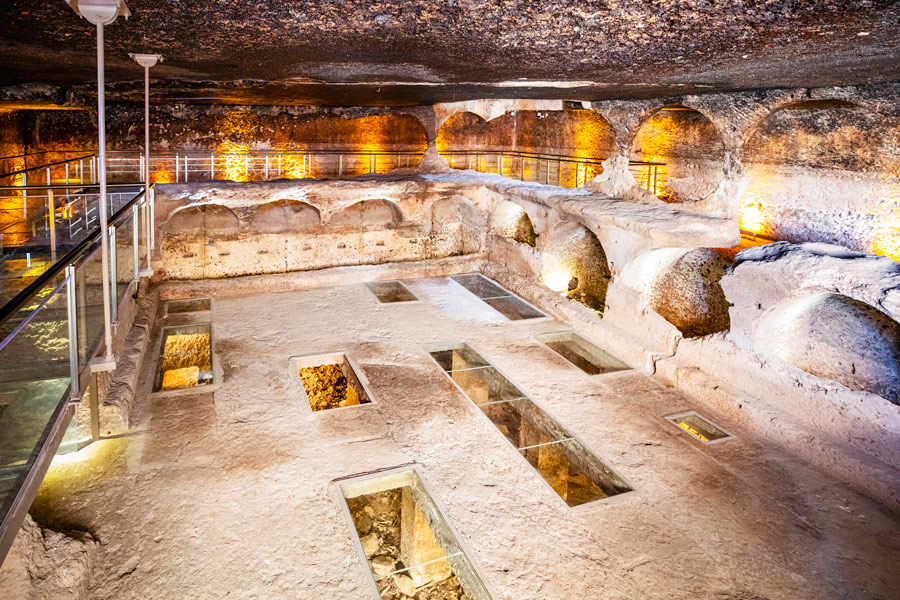
The first day should begin in the heart of the Old City with breakfast in a traditional stone house café, where olives, cheeses, fresh bread, and tea are served. Walking through the narrow alleys immediately introduces visitors to the atmosphere that defines Mardin tourist attractions. The Zinciriye Medrese, dating from the 14th century, displays fine Artuqid stonework and is an early highlight of Mardin sightseeing. A short walk away, the Great Mosque of Mardin stands with its striking minaret dominating the skyline. Lunch in the old town typically means kebabs, lentil soups, and stuffed vegetables, followed by a visit to the Mardin Museum, which holds artefacts from civilisations stretching back to Mesopotamia. Late afternoon is well spent at Kasimiye Madrasa, where courtyards and terraces open onto wide views of the plains, making it a favoured sunset spot. Dinner on a rooftop patio with a view of the old town lit up ends a day spent visiting historical ruins and stone buildings in Mardin.
The second day extends beyond the city walls. Breakfast can be taken early before travelling to the Dara Ancient City, an archaeological complex with cisterns, necropolis, and rock-hewn churches. This site is central in many Mardin city tours and allows time for walking through ancient remains in a quiet setting. A simple picnic or nearby eatery makes for a practical lunch before continuing toward Midyat, a town an hour away known for silver filigree craftsmanship and Syriac churches. Here, visitors can observe artisans at work, a core part of Mardin local experiences, and try regional dishes such as sembusek pastries or Assyrian wine at a local restaurant. The afternoon should include the Mor Gabriel Monastery, established in the 5th century and still active today. Returning to Mardin in the evening, a Turkish bath is a restorative activity before dinner featuring mezes and regional stews.
On the third day, having breakfast in a local café sets the tone before exploring Deyrulzafaran Monastery, another landmark of Syriac heritage just outside the city. Returning toward Mardin, the bazaars and main street invite a slower pace, with opportunities to shop for spices, handmade soaps, and copperware while observing daily trade. Lunch is best taken here with dishes such as içli köfte or keledoş, followed by a visit to the Forty Martyrs Church and additional time at Zinciriye or the Sabancı City Museum, depending on interest. The late afternoon allows for a relaxed walk along the alleys or a coffee at a terrace café with a view across Mesopotamia. Dinner can be unhurried, focusing on local desserts like künefe or şıllık, providing a final taste of the region.

